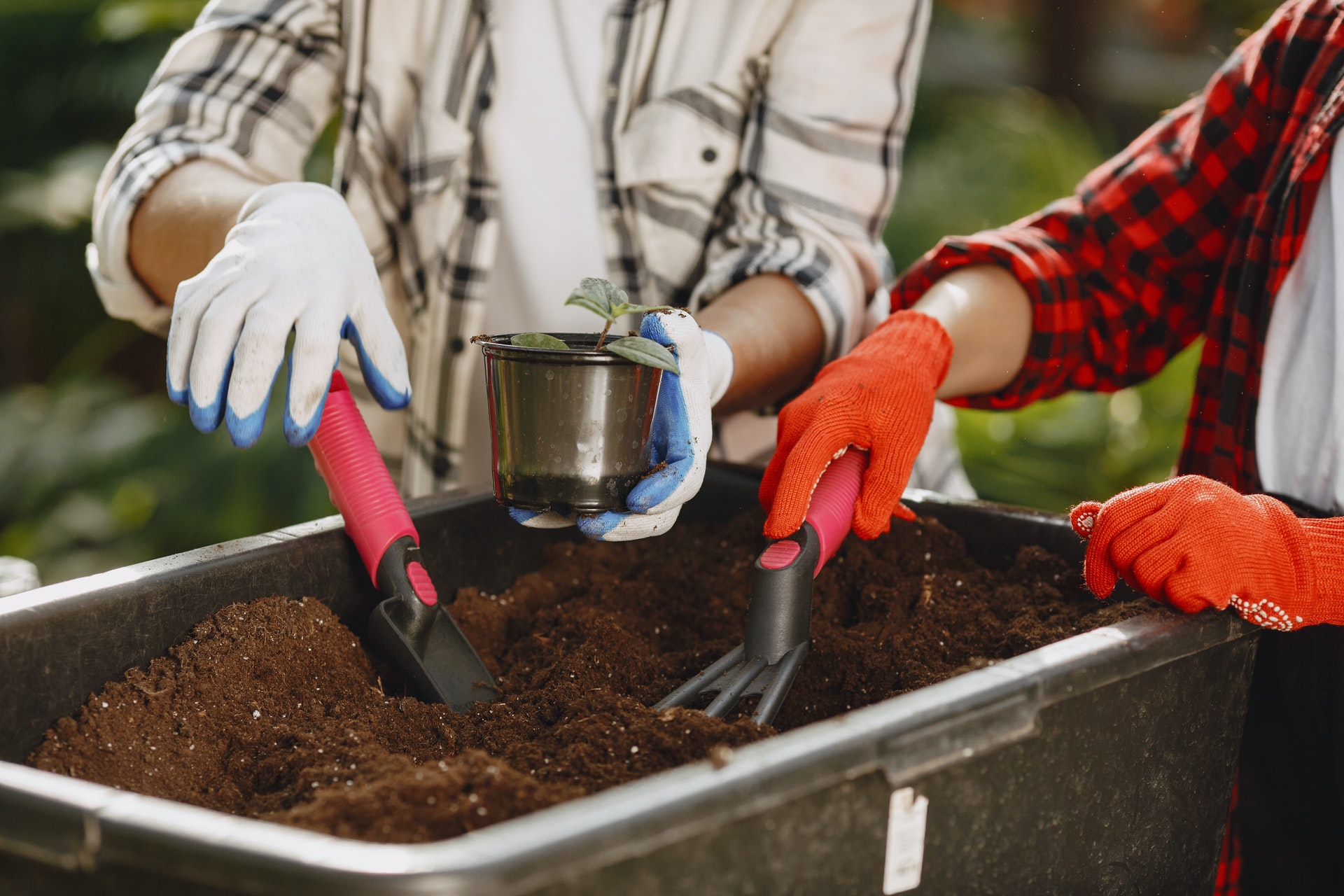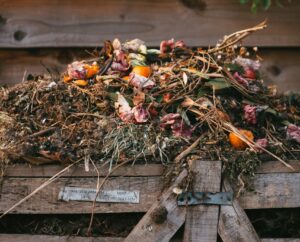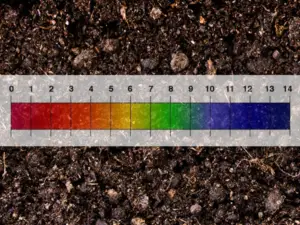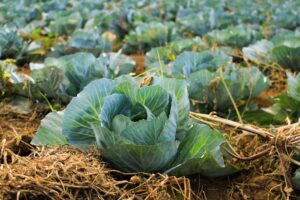Compost is the byproduct of organic matter that has undergone the decaying process. It is a nutrient-dense material teeming with beneficial microorganisms. When added to soil, not only does compost improve the nutritional and microbial profile, but it also improves soil structure, enabling better water retention and drainage, especially in clay soil. While composting can occur on its own, there are methods to help facilitate the process. This post will explore eight composting methods to help you determine which is the best one for you and your garden.
Important Factors to Consider
There are some important factors you will want to consider when trying to decide which composting method is best:
How much waste do you have access to? Generally speaking, kitchen, garden, and lawn waste are the main ingredients used for composting. The size of your family, garden, and yard should be taken into account when you consider which composting method is best because some methods require very little waste while others require considerably more.
How Much Space Do You Have? You will need to keep in mind how much room you have available when choosing the best method for your situation. Some composting methods take up quite a bit more space than others. The size of the pile is part of what determines how fast or slow the decomposition process takes place.
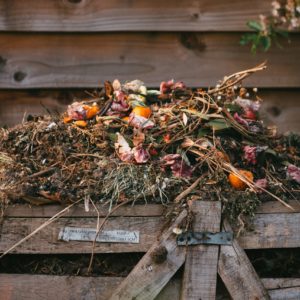
How Much Compost Do You Need? Different composting methods produce different outputs. If you have a large garden and you want to make enough compost to apply to your beds, you will need to use a method that produces a higher yield of mature compost. Conversely, if you have a small garden or a container garden, your compost needs will be less.
How Much Time and Effort Do You Want to Put Into It? Do you have enough time to manage larger, hot composting methods? Or is your interest and availability limited? This is an important consideration to keep in mind when deciding which route to go.
How Soon Do You Need It? Hot Composting verses Cold Composting How quickly you need the compost to be ready will determine if you choose a hot composting or a cold composting method. Hot composting is where the compost mass reaches an internal temperature of between 120-170o F (49-77℃), with the ideal range between 130-140o F (54-60℃). The heat causes the material to break down at a faster rate, while killing seeds and harmful pathogens. This method generally requires a minimum of three cubic feet of material that is aerated by the consistent turning of the materials. Hot composting requires more materials and effort, but the result will be more compost in less time, generally 3 weeks to 3 months, depending on the amount of material and how well the temperature is maintained.
Cold composting is passive in that you do not turn or aerate the material but allow it to decay at its natural rate. Cold composting can take considerably longer than hot composting methods.
This article contains affiliate links. If you make a purchase using one of these links, I will receive a very small commission at no additional cost to you, and it will help me maintain this website. Rest assured, I only recommend products I actually like!
Here are the pros and cons of eight composting methods and whether they are considered hot or cold:
1. Large Composting Bays, Bins or Piles – Hot or Cold
Large bays, bins, and piles are popular methods for making compost for those who have the room, materials, and time. Bays are three or four-sided containers, often made from wood pallets, recycled lumber, or fencing material, while bins are open-ended cylinders often made with chicken wire. Those who do not want to make their own can purchase affordable premade flexible bins online.
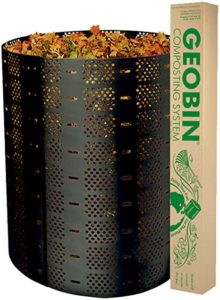
The idea is to fill the bays or bins with at least three cubic feet of compostable material. The forms keep the compost in place, thus, taking advantage of mass while still allowing exposure to air and moisture. This method also provides easy access for depositing materials and turning the compost.
Many gardeners and homesteaders use more than one bay or bin so that they can house compost that is at different stages of decomposition. Others use additional bays or bins to store raw materials waiting to be added to active compost. The bulk or mass of the material, plus the proper ratio of carbon and nitrogen, along with the consistent turning of materials to incorporate air and moisture, is what causes the compost to heat up. A hot compost pile will decompose at an accelerated rate.
The benefits of this type of composting method are that it is ready to use much quicker than other methods, and it generates more compost. It is also usually inexpensive and easy to construct. It is large enough to handle yard waste such as grass clippings and dead leaves, as well as garden and kitchen waste. On the other hand, it takes up more room, especially if you are going to use more than one bin, and it takes more time and effort to turn the compost every five to seven days, which is generally what is needed to keep the temperature elevated. I used this method for many years and found it very productive!
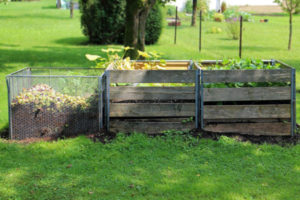
If you do not have the time or the energy to turn the material, you can create a large pile of compostable material and leave it alone. It is considered cold composting because it will not generate any heat, but the decomposition process will still take place. It will just take longer.
2. Small Composting Bins – Cold
Like larger scale composting bins, small scale bins are containers that house compost as it is decomposing. Plastic bins or trash cans with numerous holes drilled in them for air circulation take the place of wood pallets and chicken wire. The volume of material these containers can hold is considerably less than large scale bays and bins, making this a cold composting method.
If you are going to use a trash can or similar container, it will need to have a secure fitting lid, especially to keep critters out if you are composting kitchen scraps. Plus, having a lid will allow you to aerate the material by turning the trash can on its side and then rolling it on the ground. Note, however, that when the container is full, it will be much more difficult to roll and return to its upright position.
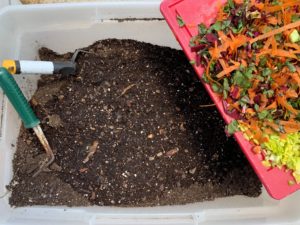
If you decide to use a storage tote, it will also need a lid to keep animals out, but instead of “rolling it,” it is easier to aerate the material using a garden tool. Both trash cans and storage totes are fairly inexpensive and easy to use, especially if you do not plan on turning them. They take up less space than the large scale bays and bins, but they produce far less compost and take quite a bit longer to mature.
3. Tumbler Composting – hot and cold
Tumbler composting has become more popular in recent years. And no wonder! This system strikes a good balance between the other methods. Tumbler composters are typically cylindrically shaped containers that are positioned on a frame or stand that make rotating the container relatively easy. Some tumblers come with dual chambers so that you can have material decomposing at different stages. Note, however, that this will reduce the size of each pile.
Tumbler composting units hold up to twice as much as the trash can method (or more depending on the size of the trash can) and several times more than the small bin method. This means that the tumbler composters work faster because they can potentially generate heat because of greater mass. They are more manageable than the large scale methods, take up less space, keep critters out, and are definitely more attractive. And because it is more convenient to use and easier to turn the compost, the decomposition process can be accelerated. If conditions are right, it can take as little as a month or two.
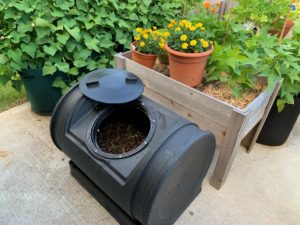
Tumbler composting is more of an investment upfront than the previously discussed methods, but some feel the convenience, ease of use, amount of compost, and time savings offset the initial cost.
4. Trench or In Ground Composting – cold
Another way to compost is by using the trench method, which involves digging a hole or a trench and then burying the waste in the ground. This simple method is anaerobic, meaning the materials do not have access to oxygen[1], and it can take six months to a year to completely decompose.
One positive for this type of composting is that the process is not visible, which is important to those wanting to maintain a certain garden aesthetic. Another is that it is completely free and does not require you to construct bins or bays.
The downside to in-ground composting is that you have to dig holes or trenches as needed. What’s more, it is not practical to retrieve the compost so you will need to bury the waste in an area where you want to add fertility to the soil for future plantings. Also, unless the waste is buried deep enough, it is possible that animals will attempt to dig it up. It will take several months or more to mature.
5. Sheet or Lasagna Composting – cold
Sheet composting, also known as lasagna or layer composting, involves layering compostable material in an area where you plan to garden in the future. As the material decomposes, nutrients and microorganisms are released into the soil. The pros for this method are that it smothers weeds in the process and requires no containers. The cost is free if you have access to free compostable materials, and the only labor involved is the initial labor needed to spread the materials. You can use sheet composting for small or large areas, and it is a good way to revitalize older beds.
One possible downside to sheet composting is that the total thickness of the layers can be substantial. Some experts recommend layers totaling 18 inches to 3 feet (46 cm to .9 meters) high. Of course, the height will decrease as the materials decompose. Another possible drawback is that if the size of the area is larger, you may not have the amount and variety of materials called for. In addition, the process can take several months to a year to complete. Keep in mind that slugs thrive in this type of moist environment, and some report being inundated with the slimy pests after sheet composting.
6. Worm or Vermicomposting – cold
Vermicomposting is the process by which worms (vermi in Latin) turn kitchen waste into worm castings (i.e., worm excrement) that are rich in nutrients and microorganisms. This method works well for those who have limited space. Those who use this kind of system rave about the fertility of the compost “tea” that can be drained from the bottom of the bins.
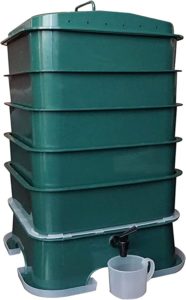
Getting started requires a bit of an investment for the worms, usually red wrigglers, and worm bins, although you can defray the cost by making your own bins. In addition to kitchen waste, you will need to provide the worms with bedding that consists of shredded paper, straw, or dead leaves.
While vermicomposting is a fascinating process, it may not be for everyone. The worms require a certain level of care that, if not delivered, could kill them or cause them to try to escape to look for a more suitable habitat. The bins cannot be placed in the direct sun or exposed to the elements. The food waste needs to be buried under the bedding, or a fruit fly problem will develop.
7. Countertop Composting – cold
Those who live in apartments, or who do not produce a lot of kitchen waste, or who simply want to add convenience to their outdoor composting system, find countertop composters to be the answer. These compact units can be placed on the kitchen countertop, hence the name, or under a sink as a handy way to collect kitchen scraps. The ones that are made of stainless steel and have a charcoal filter, like this one , make for easy cleaning and odor control.
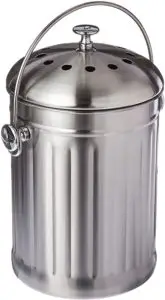
If you also have a composting tumbler or other outdoor composting system, using a countertop composter is a great way to get a jump start on the composting process until you are ready to make a trip to the outdoor composting bin. Some recommend stirring the contents each time you deposit waste in the countertop unit. Others encourage running the collected waste through a blender before adding to larger compost bins, but I have found that while helpful, neither is necessary.
Any downside to countertop composting is really just a matter of personal preference, as some would rather make a trip to the outdoor composter than rinse out a container.
8. Bokashi or EMO Composting – cold
Bokashi, which means organic matter in Japanese, is a common method of Effective Micro Organism (EMO) composting that is well-suited to the indoors. It takes a five-gallon bucket in which you layer kitchen waste and bran that has been inoculated with lactobacillus and other strands of bacteria. The combination is then sealed with a tight fitting lid (which makes it anaerobic) and allowed to ferment for about two weeks. The bacteria is said to keep the kitchen waste from smelling while it is being accumulated in the bucket.
Once the fermentation process is complete, the contents are buried in your garden or added to a compost bin where they will compost rather quickly. You will need to purchase inoculated bran each time you fill the bucket, or you can make your own, but that, too, is an investment and one more step that has to be added to the process.
A benefit to the Bokashi method is that it predigests waste which speeds up the composting process. Another benefit is that it keeps you from making trips to the compost pile. One possible drawback is that fermented compost is acidic, so you need to be careful where you bury it so that it doesn’t affect the roots of plants growing in your garden. The acidity will eventually neutralize, but until it does, it can be a problem. Another potential drawback is that the bran that is used is often rice bran and wheat bran which may pose a problem for those who are gluten or grain free.
Conclusion
We have reviewed eight composting methods used by gardeners and homesteaders alike. When it comes down to it, the best method for you is one that meets your goals and fits your lifestyle.
Composting is one of my very favorite aspects of gardening! Once you realize the benefits, I have no doubt you will become a composter for life!
Note: If you are new to composting, here is an article that introduces the basics of composting for beginners.
Thank you for reading this article! If you found it helpful, please consider sharing it with others via email and on social media!
[1] Anaerobic composting (without oxygen) and aerobic composting (with oxygen) use completely different organisms to break down the material. Some consider aerobic composting to be the only true form of composting.
